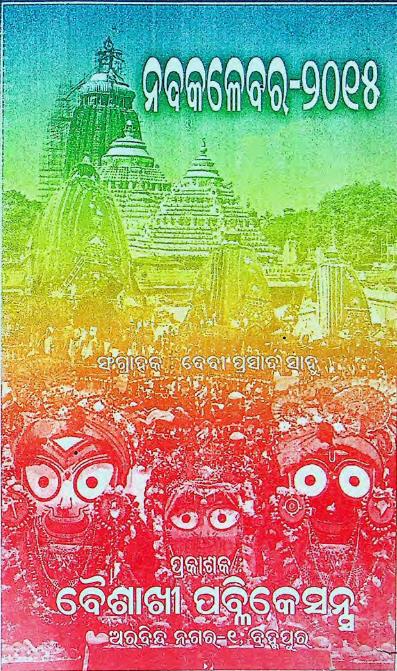In the heart of Puri, Odisha, the grand event of Nabakalebar in 2015 reverberated with the spiritual essence of Jagannath culture. The Nabakalebar — a sacred ritual involving the crafting of new wooden idols of Lord Jagannath, Balabhadra, and Subhadra — has always been a manifestation of deep-rooted cultural and spiritual traditions among the Odia people. This year’s Nabakalebar was particularly significant as it marked a rejuvenation of not only the deities but also rekindled the spiritual fervor within the devotees.
The term Nabakalebar translates to new body, signifying the periodic change of the divine forms of the triad deities in the Sri Mandir, which dates back to the time of Satyam and is woven intricately into the tapestry of Odisha’s culture. Every 19 years, the idols of Jagannath, his elder brother Balabhadra, and sister Subhadra undergo this transformation, crafted with great devotion from sacred woods known as Daru.
The Nabakalebar of 2015 was extraordinary, drawing millions of devotees from across the globe to Puri. This event is not merely a ceremonial act; it embodies a deeper philosophy of life and regeneration. The intricate process begins months in advance, with the selection of the Daru (wood) from specific sacred trees, which are believed to possess divine qualities.
Debiprasad Sahu, in his poignant essay, beautifully captures the essence of this grand tradition. He highlights how the act of replacing the old idols with the new ones is a metaphor for life itself — a cycle of death and rebirth. In Sahu’s narrative, the anticipation and devotion of the devotees are palpable; the streets of Puri thrummed with energy as people gathered to witness the rituals leading to the grand ceremony. The festival is a fusion of tradition and modernity, where ancient practices harmonize with contemporary worshipers seeking divine blessings.
Culturally, Nabakalebar is a vivid tableau of Odisha’s heritage, showcasing folk art, music, and dance that accompany the festivities. It is a time when disparate communities unite in reverence, reflecting the universal values of love, peace, and harmony. The amalgamation of rituals and community participation strengthens societal bonds, reminding the world of Odisha’s unique identity.
Moreover, the Nabakalebar has significant implications for local livelihoods as it stimulates economic activities. The influx of tourists during this period offers a boost to vendors, artists, and local businesses, creating a vibrant atmosphere that encapsulates the spirit of Puri.
Through the lens of Nabakalebar 2015, we gain insight into the soul of Odisha — a region where tradition and culture are not merely preserved but celebrated with fervor and faith. The event is a reminder that culture is alive, continually evolving while keeping its essence intact.
Debiprasad Sahu’s discourse on the Nabakalebar serves as an important reflection on the intersection of devotion, culture, and community. It is a celebration of life, an homage to spiritual continuity, and an affirmation of identity — one that resonates with every Odia, making Nabakalebar not just a ritual, but a timeless legacy that enriches the cultural ethos of India.
ooks Info
| Books name | Nabakalebar 2015/ନବକଳେବର 2015 |
| Author | Debiprasad Sahu, C. |
| No Of pages | 78 |
| Publisher | NA |
| Publication | 2015 |
| Printed At | Little Star Offset printers |
| Distributor | NA |

